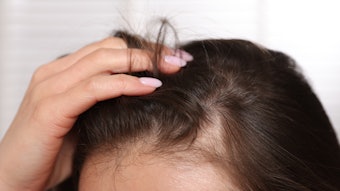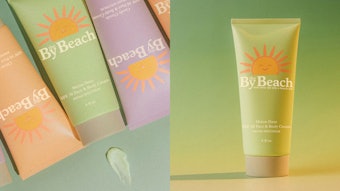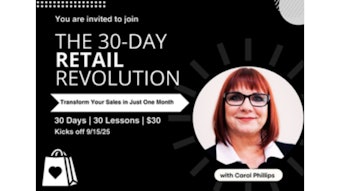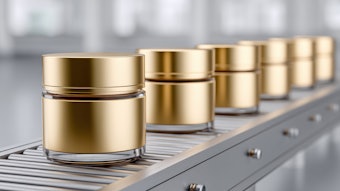
Spas today are always looking for other forms of revenue, and retail products can often be a sure bet. Below are the top tips to creating a successful retail department in your spa.
1. Determine Square Footage
How much space can you devote to retail? If you only have a few feet along a wall, you’re not really in retail, you’re most likely selling a few of the products you use in your services. Designate at least eight feet of wall space and place at least three fixtures on the floor. Don’t clutter your reception, check-in, or out counters with products. Perhaps a small container of samples would be appropriate. Finally, think about where you will store inventory (e.g. on the floor, in cabinetry, or in a back room).
2. Find the Right Products Lines
Spend time thinking about the types of products you want to sell. Of course, there are the items you are currently using in your services (ie: oils, lotions, soaps and aromas), but what other lines would work well with them? For instance, other beauty products, luxury robes, slippers, socks, sleepwear and eye masks. What about items made by local artists, jewelers and designers? Do they make sense in your spa?
3. Determine the Right Price Points
What is the quality of the product lines you will sell, and associated price points? Are they acceptable to your target market? Are you moving products every day? Is it easy for your staff to sell them? You can certainly carry a few higher-end products with some medium-priced lines, and some medium-priced products with lower-priced lines, but try to avoid a mix of all three, as it dilutes the retail image you are trying to convey. Don’t confuse the customer!
4. Decide the Proper Quantity
How many of each line do you want to have on your selling floor? If you’re going with a lower price point, then you can put more inventory on the floor. The higher the price point, the fewer items you want out. Higher priced lines also equate to higher service, where information needs to be provided to help make the sale, whether through signage or staff. Not enough inventory, and you’re not making a retail statement. Reaching “critical mass” is critical to sustaining a successful retail department.
Finally, do the vendors have minimums you have to meet? Can you obtain testers and small samples for giveaways? It’s nice to have a small selection of testers inside your spa on a table between lounge chairs where clients sit in-between services.
Related: Owning Your Retail
5. Consider Product Packaging
Is the packaging attractive and easy to merchandise? Is there adequate information provided on the label and is it easy to read? Much like many judge a book by its cover, the same can go for packaging.
6. Coordinate Your Fixtures
It’s important to shop for fixtures that best showcase your spa’s brand and your product lines. Is that wall shelving? Nesting tables? Pedestals? Double-sided shelving units? Locked, illuminated showcases? It could be a variety of types, However, they should all coordinate in color and finish. This way, they give the impression the retail area was designed to support your brand and the merchandise, and not distract from the products they hold.
Be careful with vendor-provided fixtures. They are often provided free of charge, but you should only accept them if they are a popular brand, it is a well-designed fixture, holds a fair amount of product, and the style works well with your other fixtures. Try not to have more than 30% of your fixtures be vendor-provided. Finally, can the fixtures you select be easily moved around when you want to change up your floor plan?
7. Influence Clients Through Product Presentation
How you place the merchandise on the fixtures can also make or break the look of a retail department. In simple terms, merchandising is “good housekeeping.” It’s presenting your products on fixtures in an organized fashion. The goal is to present the products in such a way that they help customers quickly see and interpret the merchandise, and then be influenced to purchase something.
Consumers tend to read merchandise on fixtures from left to right, top to bottom. By grouping merchandise on a fixture or wall according to style, size, color and type, you can create a visual presentation that is easy to interpret.
The eyes are drawn to items that are alike, so repeating a shape, size or color makes for a visually attractive fixture. This is why filling a fixture to the point of critical mass is important. The way you merchandise your fixtures attracts attention and says a lot about your inventory and merchandising capabilities.
A basic rule of thumb is to place smaller items at the top of the fixture and graduate down in size, so the largest (and heaviest) items are at the bottom. It proves we resonate with “composition,” which is when the basic principles of design are used properly. Another basic rule is to rotate your merchandise periodically. Placing products in different locations can add new life to older merchandise.
8. Decorate Beyond the Retail Shelves
Don’t forget to place a mirror on a wall. Regardless of the products you are selling, people like to look at themselves!
Vendor signs, product benefit signs, and promotional signs can all be ignored by your customers if they are not done well. Putting “sign design guidelines” into place can help train your customers to read the signs you want them to read! This means, all your sale signs look the same, all your category signs look the same, etc. It’s all about communicating your message quickly in a consistent manner. Well-designed signs can do a lot of “silent selling” for you.
9. Don’t Underestimate Lighting
Don’t underestimate the power of highlighting retail displays. First, it’s important to have all the fixtures bathed in soft, ambient light, and then highlight shelf displays or showcase displays three times brighter than the surrounding light. This accent light is extremely effective in attracting attention and getting customers to move throughout the retail area.
Sell, Sell, Sell
If you have the extra space, you can expand your current footprint, or are thinking of moving into a larger space, think about creating a small retail store. It’s a great way to keep clients who are waiting for their service occupied. After they are done with their service, they’re feeling so good and relaxed, they’re in the mood to shop and purchase!
Author, award-winning designer and international speaker, Lyn Falk, has earned praise for her holistic, innovative, results-driven design philosophy. She has devoted over 35 years to helping retailers and business owners across the country define their brand, tell their story, and create memorable customer experiences. Her designs are founded upon consumer behavior, environmental psychology and neuromarketing research. Falk started Retailworks, Inc. in1995 and continues to serve as President and Senior Designer. To reach Lyn, email her at: [email protected].











